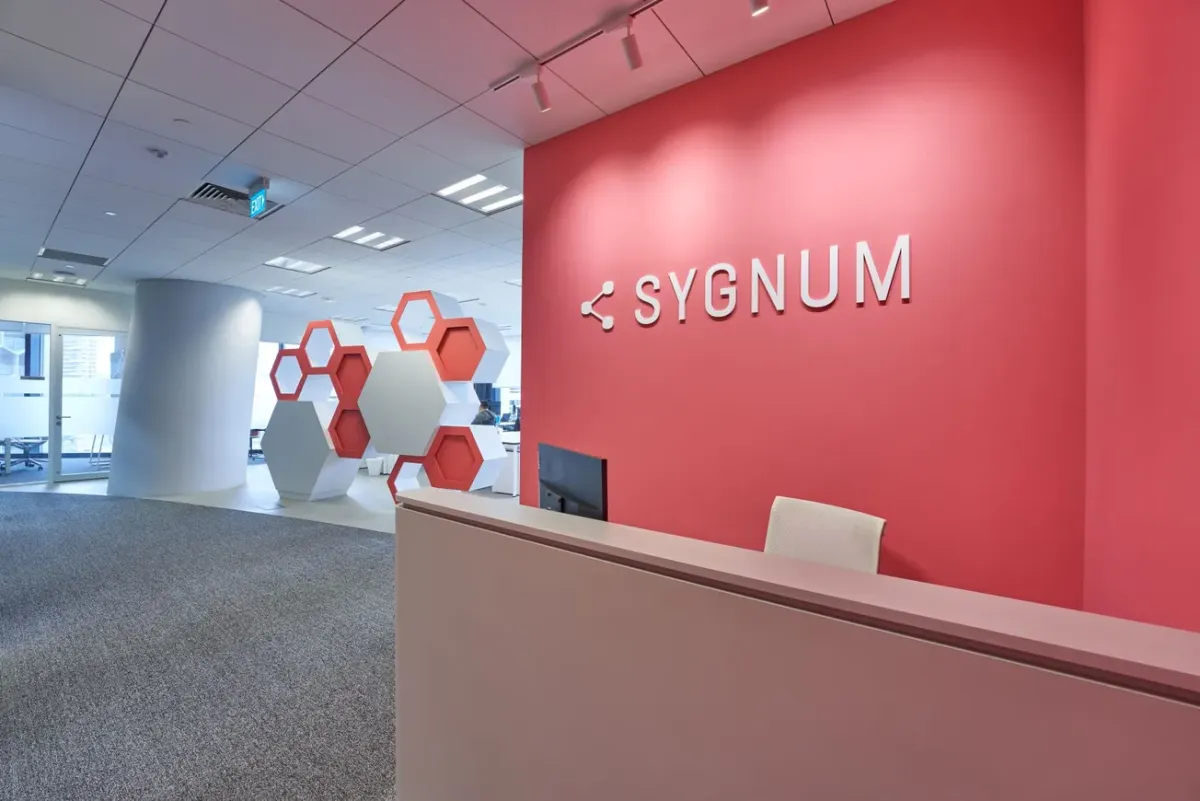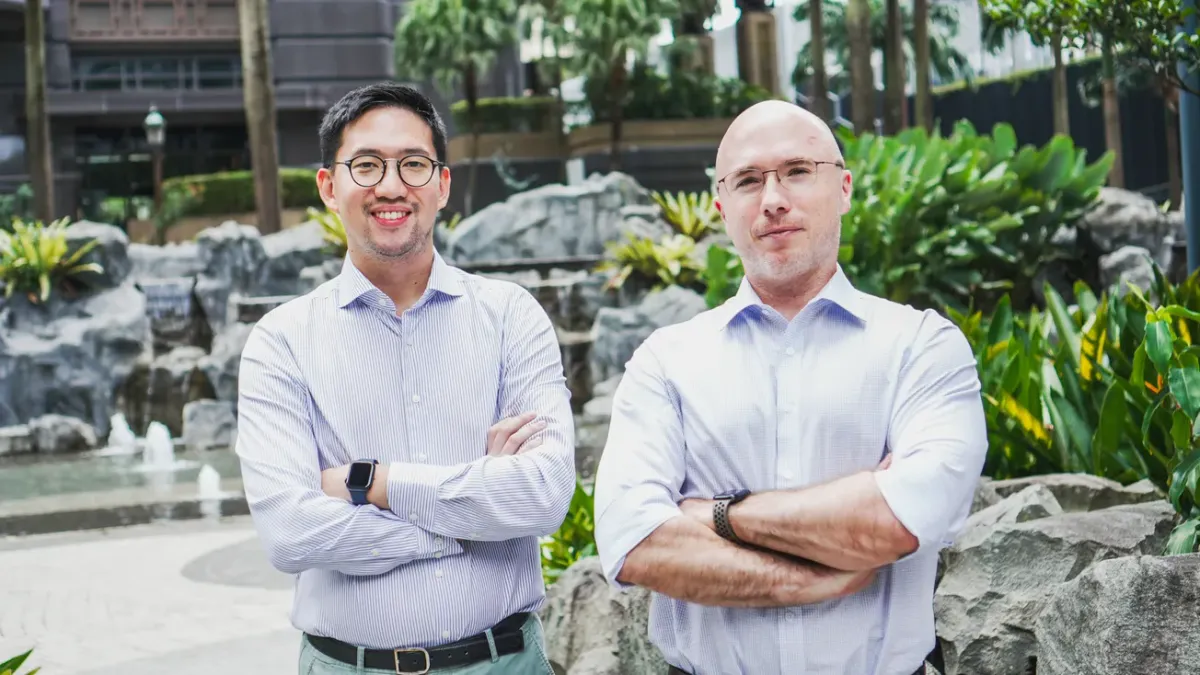Crypto firms are at the forefront of technology, fintech, and industry-disrupting developments that promise to change the world as we know it for good. However, these advancements mean little if these firms can’t raise enough capital to realize their goals, dreams, and desires.
While the crypto world and traditional finance (TradFi) are beginning to collaborate through various products for Wall Street investors, fundraising still relies heavily on old-school mechanics. Wall Street might be learning the innovative ways of crypto, but the Web3 world needs to learn the more conservative approach of TradFi fundraising.
Sygnum, with expertise in both digital asset management and traditional finance, is helping Web3 firms navigate the perilous waters of raising capital in both TradFi market as well as their own crypto fields.
We sat down with Sygnum’s Head of Strategic Digital Asset Solutions, Max Stuedlein, to learn more about the firm’s Strategic Digital Asset Solutions (SDAS) services.
Accessing Token Capital Markets
Sygnum’s SDAS, with its tagline of “enabling access to token capital markets,” advises companies on a range of fundraising opportunities, whether that be via equity, debt, or token capital markets. Elaborating on this, Stuedlein explained that that while equity and debt raises are well understood, SDAS’s expertise in structuring, advisory and fundraising becomes especially relevant when navigating token fundraises.
Optimising structures such as real-world assets (RWAs), utility tokens, and NFTs is key for fundraising. SDAS offers a range of services to unlock this potential, from advising on the most effective form of fundraising or token offering to coordinating and advising on tokenomics, and evaluates business models, community building, and where value should accrue to a token.
Sygnum Sets Sights on Hong Kong Expansion After Profitable H1 2024
Sygnum’s profitable first half positions them for continued growth, and they’ve got their eyes on regulated operations in key markets like Hong Kong and the EU.

SDAS also arranges underlying structures to support tokens, including the establishment of legal entities chains of ownership and working with listing venues. Sygnum’s in-house tokenisation platform can be used to coordinate the actual minting of the token too. Additionally, SDAS helps to connect businesses and their tokens to investors via a “well-defined fundraising process, including the development of the investment message, pitch books, financial models, and investor/client coordination,” Stuedlein said.
Web3 Challenges in a TradFi Space
Web3 projects might have been birthed from solving problems in Web2 but this does not guarantee familiarity with traditional investments. SDAS attempts to build this bridge.
“Web3 companies looking to raise funds from TradFi may face challenges given the relative immaturity of the Web3 ecosystem and the low participation rate of many types of investors,” Stuedlein explained.
That’s not to say that investors are completely clueless about Web3. Part of Sygnum’s mission is to identify investors who are comfortable and familiar with the Web3 space. “Our network of investors is particularly tuned to understanding blockchain and web3 technologies and business models,” said Stuedlein.
Conversely, those who are deep in Web3 might overestimate the sophistication of investors and their understanding of the industry. “SDAS can help create an investment narrative tuned to more traditional investors, and also provide other services to investors, such as Sygnum’s custody services, to ease the token investment process,” Stuedlein stated.
Sygnum’s Clients Team on Managing Expectations and Emotions in the Crypto Market
Sygnum’s Executive Director of Clients, Jason French, and Relationship Manager, Michael Wei, sit down with Blockhead

Teaching Tokenization
Tokenization is fast becoming a hot topic in TradFi’s growing relationship with Web3. For SDAS, clients tend to either be considering mining a token or are looking to raise funds but have not yet considered using a token to do so.
In the case of the latter, SDAS reviews the client’s business plan and, if appropriate, suggests ways in which a token offering may be an effective way to raise funds, either as part of an equity raise or as a stand-alone token, Stuedlein explained.
“In the case of the former, where a token is already part of the discussion, SDAS reviews the token use cases and tokenomics and advises on changes that might be helpful.”
SDAS then supports the firms by looking at the underlying legal structures behind the fundraising, while advising on business models to make them “fundraising ready”.
“At this point, our work follows that of traditional fundraising: reaching out to the selected investors, collecting investor interest, getting NDAs signed and arranging meetings between investors and our client’s management team,” Stuedlein said. “We would project manage the entire process to an ultimate closing and token minting.”
Sygnum’s Switzerland team or a third party usually carries out the tokenization process itself, offering their clients a choice of Singapore or Switzerland-based tokens. “Dual-listing” type arrangements, where tokens can be minted in multiple jurisdictions, can also be considered.
Sygnum SVP Benedict Yap on Applying TradFi Sensibilities to Crypto Investing
Sygnum Asset Management’s Senior Vice President and Product Specialist, Benedict Yap, details how Sygnum offers long-term crypto investments with TradFi experience

Tokenization Misconceptions
Tokenization is still a novel concept, and with that comes an array of misunderstandings and misconceptions which SDAS is attempting to address.
For example, RWA tokens do not automatically bring a new institutional or accredited investor base, said Stuedlein.
“Yields on RWA tokens need to have a significant premium over the risk-free rate and a solid investment rationale,” he explained. “This is an area where a group like SDAS can provide guidance on crafting a strong investment message and provide feedback on likely investor acceptance.”
“Another challenge in the RWA space is that investors who might traditionally be interested in alternative investment classes such as art, wine, real estate, or even more esoteric assets are often not experienced with buying and holding tokens and might prefer to gain exposure via traditional means,” he continued.
Investors traditionally interested in alternative assets might not be experienced with buying tokens. Education and handholding are required to expand this investor base, so working with an advisory partner who has relationships with informed investors is crucial, according to Stuedlein.
Furthermore, the amounts being raised are relatively small and the secondary markets for these products are fragmented and illiquid. Regulatory requirements around offering tokens to retail clients as opposed to accredited investors further limits the scope of primary offerings.
Emerging Trends
Utility tokens are at the forefront of investor interest, especially on the institutional side, Stuedlein pointed out.
“The opportunity to invest in these companies via tokens, or perhaps via equity with token warrants, is a novel way to share in the value these companies aim to capture,” he explained.
“In some cases, companies are eschewing equity raises altogether and only raising via utility tokens. The appeal to investors here is that depending on the tokenomics, there can be more direct value accretion to the token rather than the equity, and that token can be more easily monetised and valued via secondary sales.”
Additionally, a utility token can also capture value outside of the original intent.
“Growing ecosystems around a token can generate use cases and subsequent value that wasn’t originally considered and might not go to the original issuer,” Stuedlein added. “An investor owning the token, rather than the equity of the issuer, will be able to capitalise on this new value generation. An equity holder would only participate in as much the original issuer stands to gain from these new use cases.”
What Investors Want in Web3
Given that Web3 was largely birthed to innovate solutions for Web2 problems, investors are looking for Web3 projects that identify and solve such problems.
“When evaluating companies in the Web3 space, Investors want to see solutions to real problems that couldn’t be solved without leveraging these technologies,” Stuedlein said.
“Institutional investors are less impressed with companies using Web3 technologies just for the sake of saying they are Web3. Or tokenising something just for the sake of tokenising it.”
Looking ahead, Stuedlein believes that a combination of increased regulation and investor education will be the most impactful development for the space and its investors.
“Lack of regulatory clarity is one of the chief impediments to the development of Web3 financial product solutions necessary for wider adoption of tokens as investment products, although recent developments have gone some way to resolve this” he said.
Beyond Borders: Sygnum Sets Sights on New Markets Post-Funding Success
In a candid conversation with Blockhead, Sygnum Singapore CEO Gerald Goh outlines the company’s strategic roadmap post its successful funding round, emphasizing expansion, regulatory navigation, and a bullish stance on the crypto market’s future.

With that in place, the tokenization process will become a commoditised service, Stuedlein argued. “It’s not the technical act of creating the token itself that creates value, but rather the investment it represents and the Tokenomics that allocate underlying value. How the token is minted will become less novel and interesting, as long as it meets some minimum standards,” he explained.
As for RWAs that are minted for fund-raising purposes, Stuedlein said there is a significant issue around market fragmentation that contributes to the lack of wide investor uptake. An increase in secondary market liquidity would address this as it would reduce issuer risk and comfort investors.
“Currently I see the secondary markets as incredibly fragmented and illiquid,” Stuedlein said. “I expect there will be consolidation in exchanges and the winners will attract enough liquidity to drive the RWA token market forward in a meaningful way.”
This news is republished from another source. You can check the original article here






